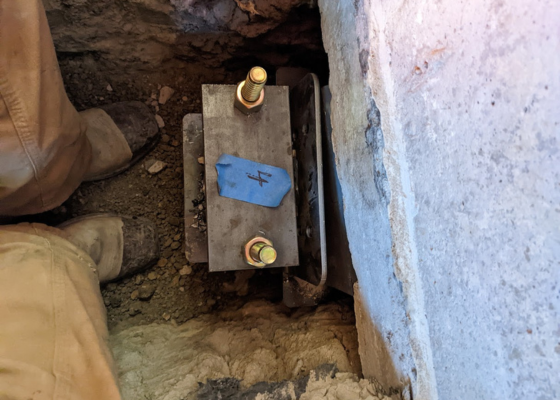
Understanding Helical Piers for Foundation Repair
Helical piers, commonly known as screw piles, offer a reliable solution for foundation repair. These devices consist of a steel shaft with helical plates, resembling a giant screw, which is driven deep into the ground to provide robust support for structures. Here’s an in-depth look at helical piers, their functionality, and their benefits.
What Are Helical Piers?
Helical piers, also referred to as screw piles or helical piles, are deep foundation elements engineered to stabilize and support structures. They consist of a steel rod with helical plates that anchor the foundation securely when screwed into the ground. These piers are especially effective for stabilizing and lifting homes, buildings, and other heavy structures.
How Do Helical Piers Work?
Helical piers function by being screwed deep into stable soil or bedrock, creating a firm anchor that can support substantial weight. Their helical design allows for installation with minimal soil disruption, making them suitable for various soil conditions. Once in place, they bear heavy loads and resist vertical and horizontal pressures.
Installation Process of Helical Piers
The installation of helical piers involves several key steps to ensure stability and effectiveness:
- Excavation: The installation site is excavated to the required depth.
- Drilling: A hollow drill bit is used to bore through the soil to reach stable ground.
- Insertion: The helical pier is inserted into the drilled hole and screwed into place.
- Grouting: Cement grout is injected around the pier to fill any voids, enhancing stability.
- Testing: The pier is tested to confirm it can support the necessary loads.
- Backfilling: The site is backfilled with soil and compacted to complete the installation.
Benefits of Helical Piers
Helical piers offer numerous advantages for foundation repair and stabilization:
- Durability: Designed to last for decades, helical piers provide a long-term solution for foundation issues.
- Stability: They transfer the weight of the structure to stable soil or bedrock, preventing further settlement.
- Versatility: Suitable for both new construction and existing structures, adapting to various soil conditions.
- Ease of Installation: Helical piers can be installed quickly with minimal disruption to the surrounding area.
Common Uses of Helical Piers
Helical piers are employed in a variety of applications, including:
- Residential Foundations: Stabilizing homes experiencing settlement or foundation issues.
- Commercial Buildings: Supporting large structures where soil conditions are poor.
- Infrastructure Projects: Providing stability for bridges, towers, and other heavy constructions.
Comparing Helical Piers to Other Solutions
When evaluating foundation repair options, it’s essential to compare helical piers with other methods:
- Helical Piers vs. Concrete Piers: Helical piers offer greater support and longevity compared to concrete piers, making them ideal for heavy structures.
- Helical Piers vs. Push Piers: While push piers rely on the building’s weight to drive them into the ground, helical piers are screwed in, providing more control and precision.
- Helical Piers vs. End-Bearing Piers: Helical piers are more versatile
Ensuring Long-Term Success with Helical Piers
Proper maintenance and regular inspections are crucial for ensuring the longevity of helical piers. Annual check-ups can help identify potential issues early and maintain the system’s effectiveness. To get a free estimate and learn more about whether helical piers are the best option for your home, contact our foundation repair experts today.
Conclusion
Helical piers are a robust and efficient solution for addressing various foundation problems. Their ability to provide strong, stable support makes them an excellent choice for both residential and commercial projects. By understanding their installation process, benefits, and applications, you can make an informed decision to protect and stabilize your property.
